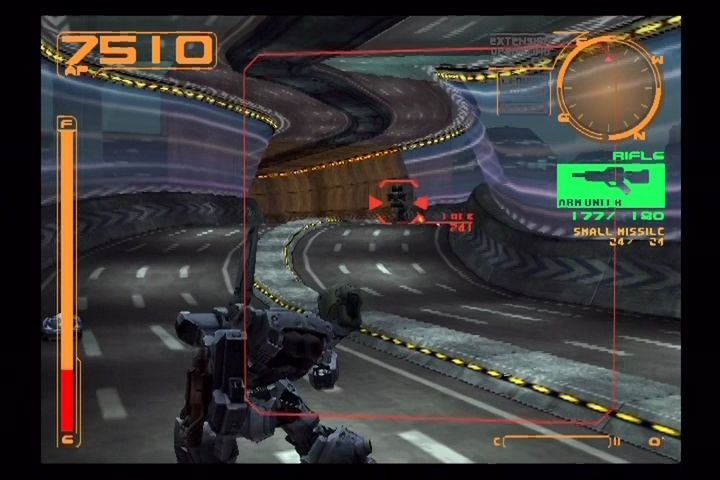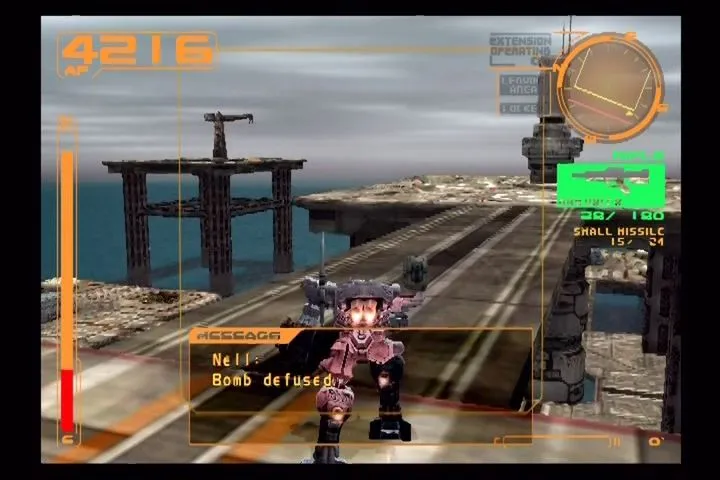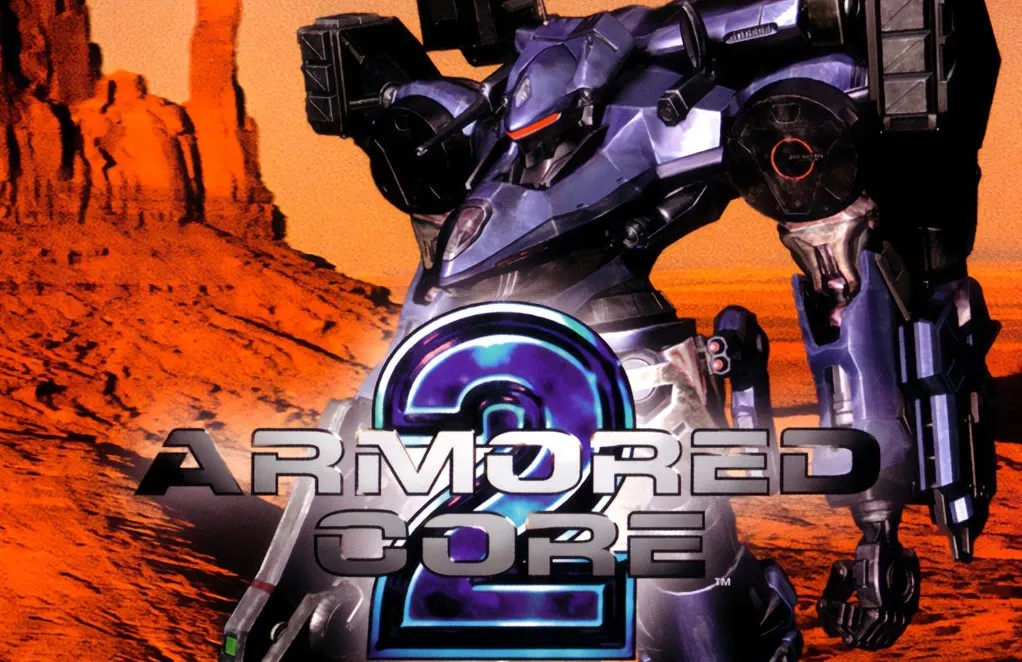It’s the year 2001. The PlayStation 2 was available for rent at Blockbuster, and there weren’t many games out for it yet. One that was available, called Armored Core 2, lit up my eleven-year-old brain. I could play as the pilot of a giant mech in a dark, gritty future of corporate greed, interplanetary strife, and endless explosions? Sign me up.
I still remember how giddy I was driving home with the PS2 in my lap. Then I booted up Armored Core 2, and I heard the grizzled voice of Strung telling me that either I succeeded at my first mission or died, with the implication that my demise would be a check box on some corporate finance sheet, far more inconvenience than tragedy.
I still recite the opening lines of that tutorial to myself all these years later.
I played for maybe three hours that night, well past my bedtime, only to discover, to my horror, that I’d failed to buy a memory card to save my progress. Whatever I’d accomplished (and it wasn’t much) would disappear the moment I turned off the console. And that would happen every time. So I resigned myself to playing those same three or so hours endlessly, whenever I could convince my parents to take me back to rent the PS2 again.
It wasn’t until Christmas of that year that I had my own PS2 and, with it, Armored Core 2 and an actual memory card. I crushed that game every chance I got, and while none of my builds were even close to efficient, and none of my gameplay worth a damn, I was absolutely hooked. Something about the weight of the movement, the fantasy of controlling a massive, mobile hunk of steel on a faraway planet in a future I would never see — it was almost too much.

Screenshot via Moby Games
I would go on to play every Armored Core game on the market. The first game and all its sequels, AC2: Another Age, Armored Core 3, and Silent Line: Armored Core. You name it, I played it. Needless to say, I burned myself out. The rapid-fire release of new AC games was too much, and even when I started a new numbered title, I would sometimes be baffled by its design choices or be infuriated by one of its head-scratchingly bad missions.
Then the PS3 and Xbox 360 came out, and Armored Core 4 not long after, and I just couldn’t be bothered. I would still go back and play the games I loved when I was younger, but as an edgy teenager, what I played as a kid was on the bottom of my list. That and I’d discovered Team Fortress 2, though that’s another story.
Despite my slight falling out with the franchise, I never stopped loving the games I had played, and when I got a Steam Deck almost a year ago, one of the first things I did was get Armored Core 2 running on it, with proper controls this time. I was astounded by how much my enjoyment held up over more than two decades of my life. It wasn’t just nostalgia, though I know it played a role. Here was a game that was truly fun for the sake of fun without being burdened by aggressive monetization and that allowed for a kind of player freedom and expression I hadn’t felt in a long time.
My reaction, then, to seeing Armored Core 6: Fires of Rubicon on the horizon was one of sheer elation. Like many others, I’d grown to adore the Souls series and all its relatives, and the thought of FromSoftware taking all the lessons they learned making those games into AC was almost too good to be true. And the more we see from the game, the better it gets.
Now, if I take stock of my entry point to Armored Core, I’m reminded that my experience is all but impossible now. In our current gaming environment, renting a physical disk and a physical console with no onboard memory only to play its opening few hours endlessly is crazy talk. Yet I like to think many my age remember fondly the times when a demo disk would come with their favorite gaming magazine, or when they bought Zone of the Enders for the Metal Gear Solid 2 demo that also came in the box.

Screenshot via Moby Games
It was a time before battle pass-driven experiences, live-service, drip-fed content that exists only to make money. The companies making the games, and the younger generation playing them, were both in a more formative period. Sure, Nintendo and Sony were still duking it out, but Sega was still in the mix as well, and the Xbox was basically a Halo machine, beloved by fans of that franchise but good for little else in the eyes of some.
The late ’90s and early 2000s were a time when legends were born, dynasties built. But that doesn’t mean that those times were inherently “better” than where we are now, creatively, at least. That literally billions of kids and young people now have easier access than ever to moments like mine with Armored Core is testament to the power of our medium. I imagine in twenty years, someone around my age now will have fond memories of some other title that captured their imagination and wouldn’t let go.
We’re also free of many of the limitations of years past. As much as I love to reminisce about memory cards and GameSharks, cartridges and demo disks, they were all cumbersome at best. There was also much less room for smaller developers to get their feet in the door. I don’t know how many of today’s indie classics would have been greenlit at the time, even compared to the risk-averse industry we have today.
Instead, games like Armored Core 2 were quickly replaced by a slightly different version of the same games a year or so later, perpetuating a cycle of good but not great games that got lost in the weeds.
None of these differences in times will ever dampen my love for the games that made me the player I am today. The Armored Core 2s and Final Fantasies defined my tastes for literal decades, and as much as I wish gamers today could experience those feelings the same way I did, I understand that they’ll make their own memories with Armored Core 6, free of the baggage of nostalgia.






Published: Aug 27, 2023 12:00 pm